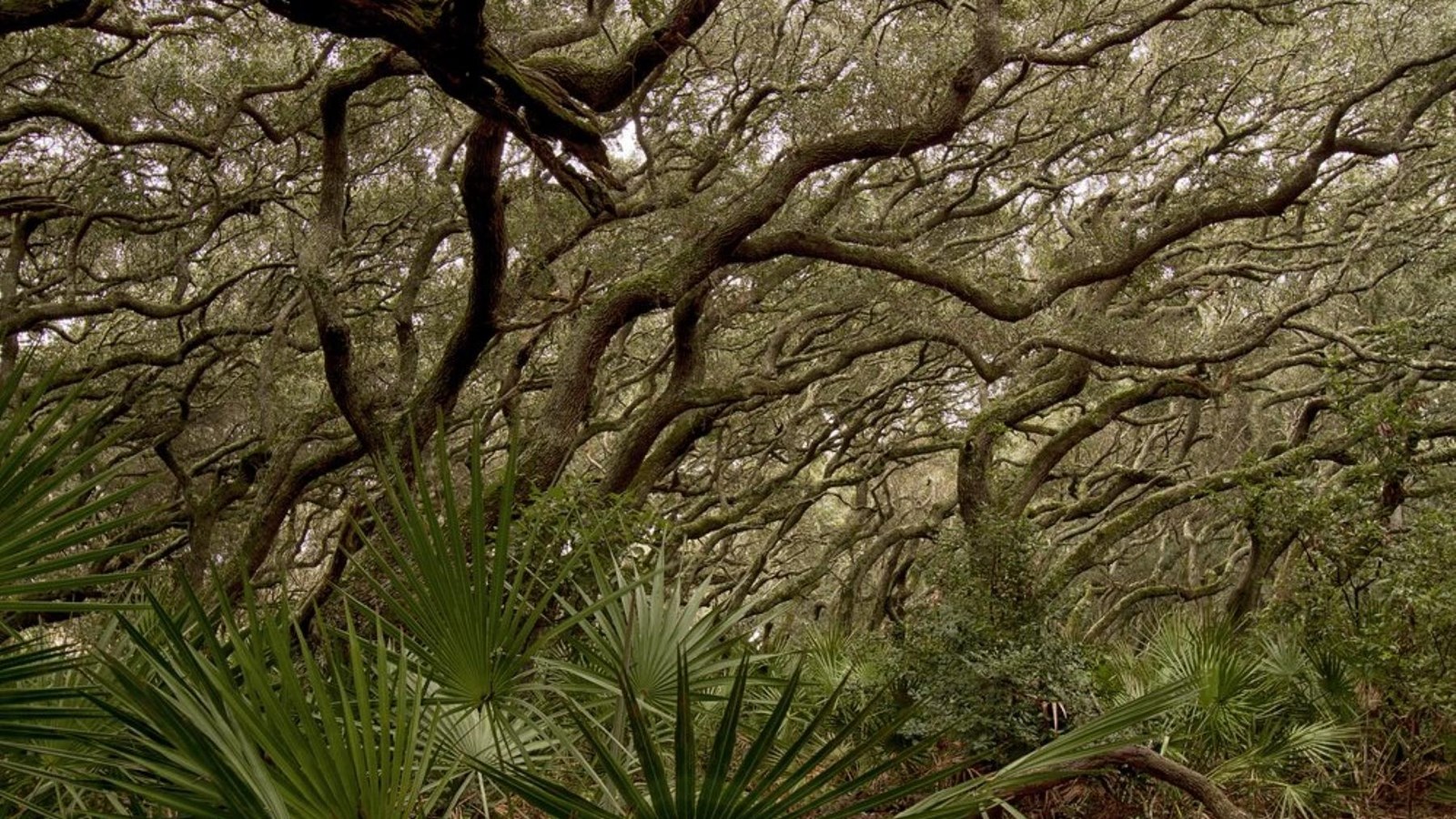Last updated: July 14, 2022
Place
Dungeness Audio Tour Stop 2

NPS
Historical/Interpretive Information/Exhibits
Cumberland Island is filled with an abundance of natural resources and has been utilized for a wide variety of human purposes throughout its history. Live Oaks, the trees that surround you as you walk the road, are an excellent example of human manipulation of a natural environment. Live Oaks, an excellent hardwood species with notably curved branches, became extremely valuable by the mid to late eighteenth century for use in ship building. Because the branches are naturally curved, they were perfect for the knee joints of a ship’s hull. Although the island is almost entirely covered in trees today, this has not always been the case. By 1850, many of the island’s trees had been cleared and the island devoted to agriculture. As a result, today’s live oak trees are primarily second growth.
The early 1700s was an uncertain time on Cumberland Island, with both Spain and England claiming ownership of this strategic location. In 1733 James Edward Oglethorpe established the colony of Georgia on the south bank of the Savannah River. In 1736, acting against orders, Oglethorpe pushed Georgia’s boundary all the way south to the Saint Marys River. Cumberland Island, known then as the “Highlands” but quickly renamed Cumberland, became a strategic outpost against Spanish encroachment in Georgia. By 1740, a group of Scottish Highlanders had built two forts for Oglethorpe, Fort St Andrews and Fort Prince William, one on each end of the island. They lived in a small garrison settlement on the north end known as Barriemacke outside of Fort St Andrews. In 1743, when the English decisively defeated the Spanish in the Battle of Bloody Marsh on St Simons Island, Oglethorpe no longer had need of his Cumberland Island fortifications and abandoned the island. Some of his men chose to remain behind, making Cumberland Island home
